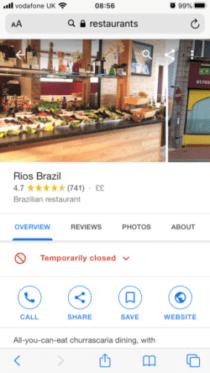Mobile SEO is noticeably more affected by the user experience than other forms of search engine optimization. That’s because the bounce rate is significantly higher with mobile users than those on PCs and laptops. Bounce rate is a factor that search engines will rank you for, and if your bounce rate is too high, then Google will consider that your site is not providing users with the experience they’re looking for.
The bounce rate is when a website visitor lands on your pages and then leaves quickly. Your bounce rate will be worse if that user takes no further actions on your pages, such as clicking on a link or another page. The goal should be to have a high ‘dwell time’, which is the amount of time that someone spends on your website after finding it. You can do this by making sure that you have:
- Fast loading times: If your website takes more than a few seconds to load, then people are just going to bounce. If it takes longer than two seconds to load, then you can lose up to 47% of your site visitors. Take longer than three seconds, and you lose another 40%. Use the Google mobile speed test to find out exactly how long it takes your website to load on a mobile device, if it takes too long then you’re going to need to speed up your website. There are many in-depth guides on how to do this, but the basic steps include –
- Using an image compressor to reduce the size of your photos, with larger images slowing down your entire site’s loading time
- Use caching so that you can deliver your pages more quickly
- Get into the coding and combine code where you can
- Switching to a better website hosting platform
- Responsiveness: This is at the core of your mobile SEO and the experience of your website visitors. A responsive website is one that changes layout and design elements depending on the type of device it is being viewed on. The goal is to create a better browsing and visual experience (you have probably used your phone to visit a non-responsive website and seen the immediate issues). Making sure that your website is responsive to device-use can be a very quick and easy task, and yet so many websites remain stuck on desktop view only. Hosting platforms like Wix and WordPress have themes that you can add for improved responsiveness, and on some platforms, it’s as easy as turning on ‘responsive’ in the settings.
- Seamless Consistency: The importance of consistency in terms of branding is the subject of much online discussion. What is less discussed is the need for website consistency from device to device. In the digital and mobile world, consumers jump from phone to tablet to laptop throughout the day and can visit a website on multiple devices over a very short time. Branding consistency is vital, but so is functionality. If your website has more limited features (such as fewer ways to pay, unavailable content, etc.) on a specific device, then those consumers will be far more likely to head to a website that is consistent on all of the devices that they want to use.
- Pop-Up Ads: Adverts and promotional banners can be critical for your sales funnel, but they can also be a significant problem for mobile users. An immediate pop-up ad that prevents the user from being able to see the content will only add to your bounce rate, affecting your SERP rankings immediately. Those pop-ups might be great for your conversion rates on laptops, but on mobile, they are just in the way. Ideally, you should remove those adverts and use alternative calls-to-action that will convert instead. Google will now punish those websites that have the following advert issues:
- Pop-ups that cover the main content of the page
- Interstitial ads that show up after a few seconds of looking at a page, especially if that ad blocks out the content
- Having the main content ‘below-the-fold’ with an advert ‘above-the-fold’
However, some pop-ups are tolerated by Google:
- Age verification interstitials and cookie-warning notices are acceptable
- Easily dismissible pop-ups that take up little space on the screen and can be easily removed
Remember, too, that many mobile device users have installed ad-blockers on their phones and tablets, so not only will they not even see those pop-ups, they will also be slowing down your website by valuable seconds. You need to evaluate the value of those adverts, and in many cases, get rid of them entirely and look at alternative design choices.
There are some areas of mobile SEO that will be consistent with the rest of your SEO options. There are many guides available on these types of SEO essentials, and the basics will largely be the same. For improved mobile SEO, you need to adopt these practices and keep up to date with them. Make sure that your website has made use of the following:
- Content Optimization
- Appealing headlines
- Keyword research and use
- Inbound links to aid user navigation
- Long and short-form content that has value
However, there are differences between mobile SEO and other types of optimization.
While Google and other search engines state that they don’t use social media as a ranking factor, the fact is that there are a lot of indications that it does play a part. It seems that a strong presence on social media results in a higher ranking on SERPs. Even without that suggestion, it’s clear that there is a link between mobile SEO and social platforms, not least because of the simple fact that about 80% of all social media browsing is performed on a mobile device. To improve the link between your social presence and your website, make sure that you make your content as easy to share as possible.
If someone reads your latest blog post on their phone and it takes more than a few seconds for them to work out how to share it, then there’s a higher chance that they will just not bother. Don’t forget that social sharing buttons don’t just have to be Facebook, Twitter, or Reddit. Make sure that there are options for sharing to messaging platforms like WhatsApp and Signal.








